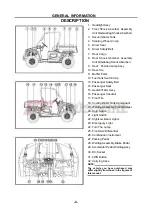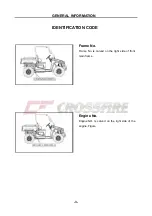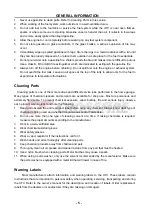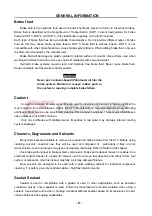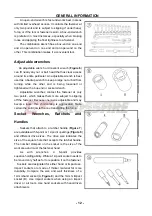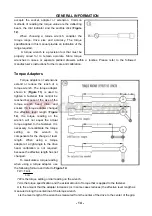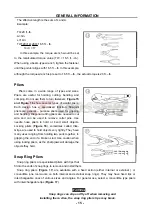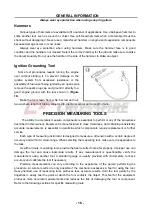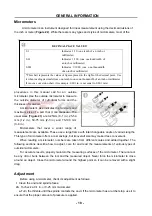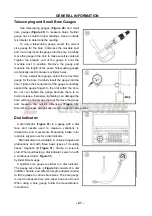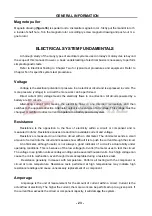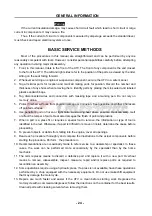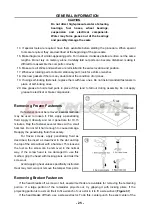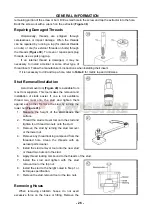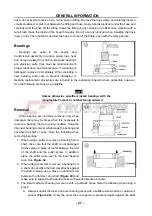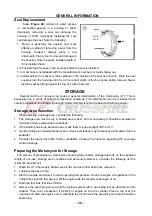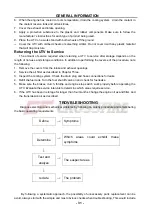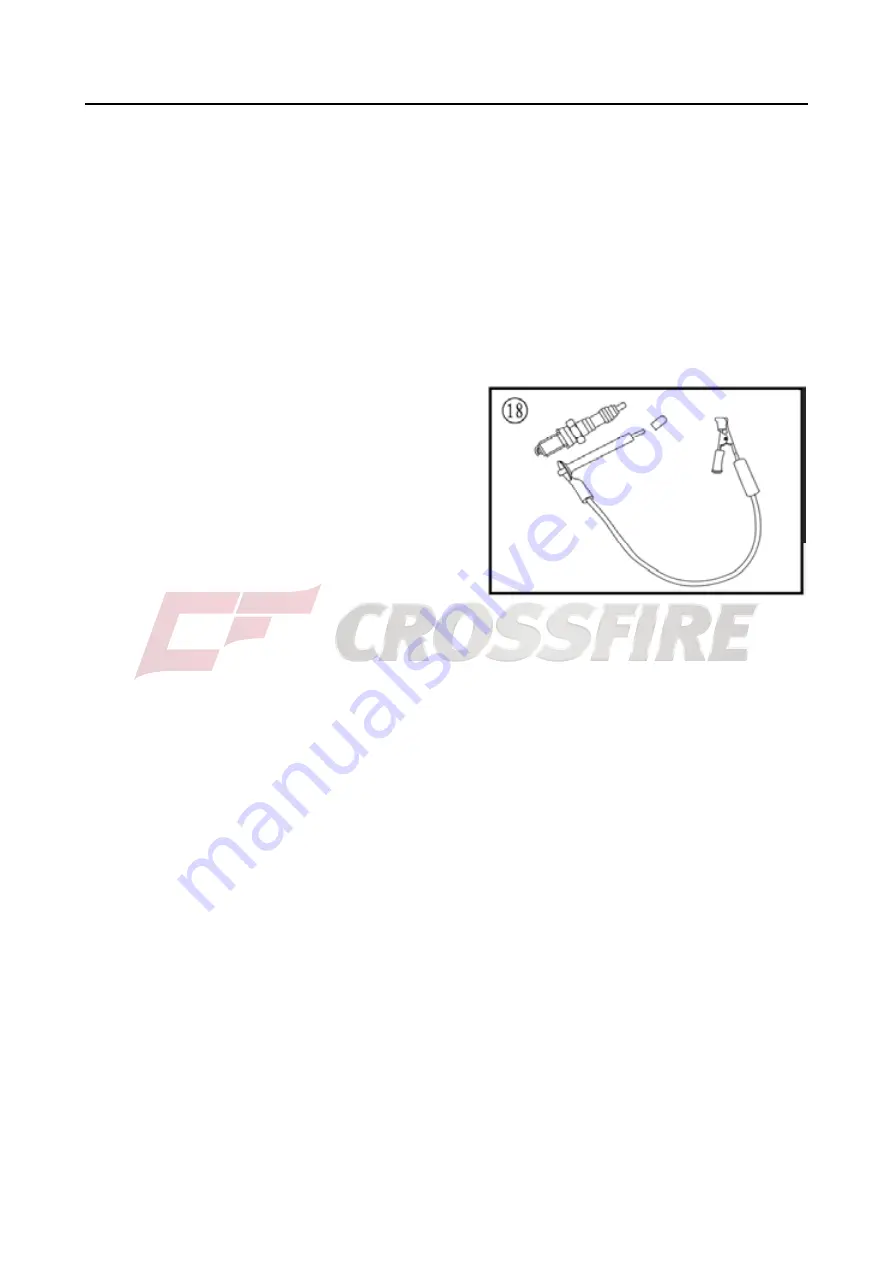
GENERAL INFORMATION
- 16 -
Always wear eye protection when using snap ring pliers.
Hammers
Various types of hammers are available to fit a number of applications. Use a ball-peen hammer to
strike another tool, such as a punch or chisel. Use soft-faced hammers when a metal object must be
struck without damaging it. Never use a metal-faced hammer on engine and suspension components
because damage occurs in most cases.
Always wear eye protection when using hammers. Make sure the hammer face is in good
condition and the handle is not cracked. Select the correct hammer for the job and make sure to strike
the object squarely. Do not use the handle or the side of the hammer to strike an object.
Ignition Grounding Tool
Some test procedures require turning the engine
over without starting it. To prevent damage to the
ignition system from excessive resistance or the
possibility of fuel vapor being ignited by an open spark,
remove the spark plug cap and ground it directly to a
good engine ground with the tool shown in (Figure
18).
Make the tool shown from a No.6 screw and nut,
two washers, length of tubing, alligator clip, electrical eyelet and a length of wire.
PRECISION MEASURING TOOLS
The ability to accurately measure components is essential to perform many of the procedures
described in this manual. Equipment is manufactured to close tolerances, and obtaining consistently
accurate measurements is essential to determine which components require replacement or further
service.
Each type of measuring instrument is designed to measure a dimension with a certain degree of
accuracy and within a certain range. When selecting the measuring tool, make sure it is applicable to
the task.
As with all tools, measuring tools provide the best results if cared for properly. Improper use can
damage the tool and cause inaccurate results. If any measurement is questionable, verify the
measurement using another tool. A standard gauge is usually provided with micrometers to check
accuracy and calibrate the tool if necessary.
Precision measurements can vary according to the experience of the person performing the
procedure. Accurate results are only possible if the mechanic possesses a feel for using the tool.
Heavy-handed use of measuring tools produces less accurate results. Hold the tool gently by the
fingertips to easily feel the point at which the tool contacts the object. This feel for the equipment
produces more accurate measurements and reduces the risk of damaging the tool or component.
Refer to the following sections for specific measuring tools.

